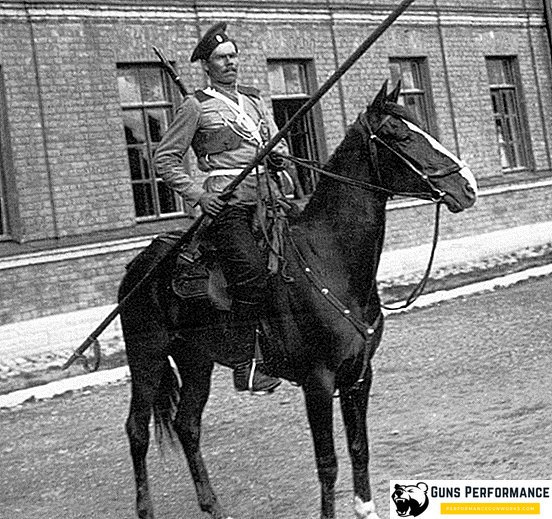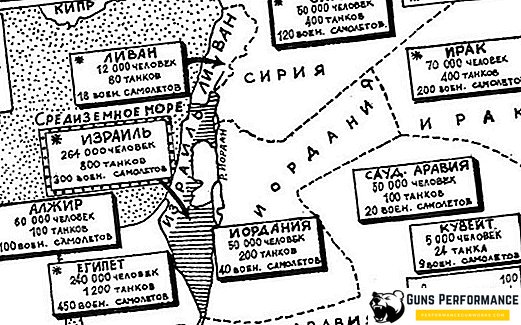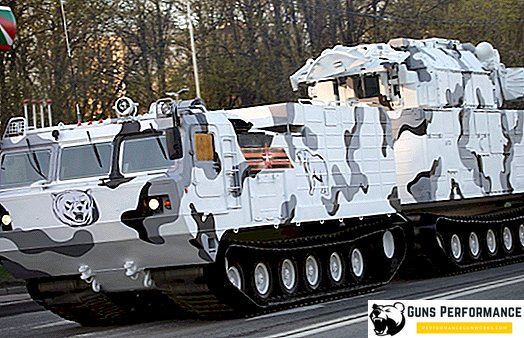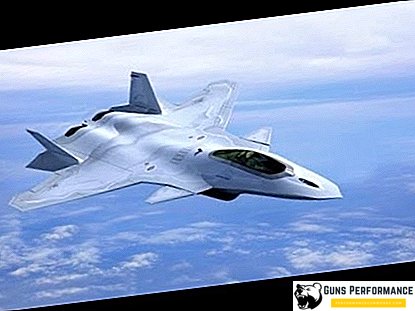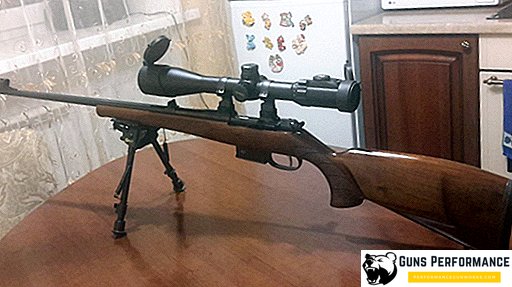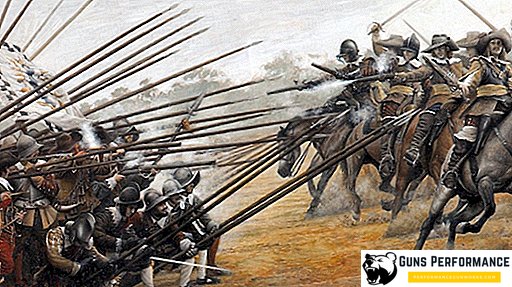
Polearms are much older than swords and sabers. And let it not be shrouded in such a heroic and romantic halo as bladed weapons, but it was the spear that for long centuries served and served faithfully both infantrymen and horsemen. It did not become such a recognizable symbol of war as a sword or a sword, but despite this, the spear was the main weapon of the Greek hoplites, and Swiss pikemen, and medieval knights in armor. Contrary to popular belief, the most popular weapon in the ancient world and in the Middle Ages was not a sword, but a spear.
The spear is the most common type of pole arms, it consists of a long wooden shaft and a tip. Spears (rather arbitrarily) can be divided into two large groups: throwing and intended for use in melee combat. And in their functional spears belong to the throwing, piercing and piercing-cutting weapon.
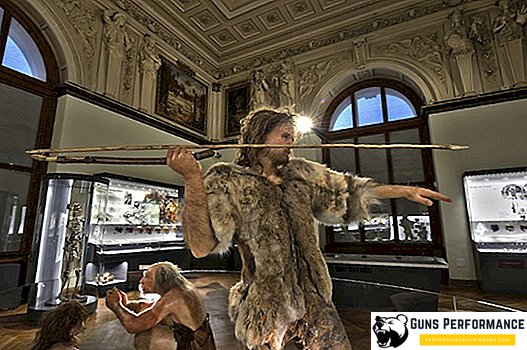
Today we can not say exactly when the creation of the spear. It is likely that this weapon was first manufactured before the appearance of Homo Sapiens on the planet. The military history of the spear ended only in the middle of the last century.
And there are several explanations for this. First, this weapon was very cheap, making a spear did not present any difficulties and required a minimum of time and resources. That is why the spears were armed with members of numerous peasant uprisings who could not afford more sophisticated and expensive weapons. Secondly, working with a spear did not require such a long preparation, which was absolutely necessary to master other types of weapons (sword or bow). This spear is very effective. To cut the spear shaft in battle is not so simple, most likely, the blow will be on a tangent. In addition, the spear shaft was often iron bound to strengthen it. And thirdly, the spear is a very versatile weapon, it is suitable for both the rider and the foot warrior. And if necessary, it can be thrown at the enemy.
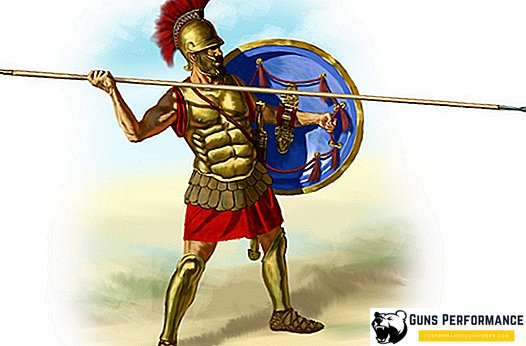
For throwing a special kind of spear was invented - a dart. To improve the flight-tactical characteristics, the darts were properly balanced and balanced. Such throwing mini-spears were already known in the Stone Age.
The spear is widely represented in the mythology of various nations. It is a symbol of aggressive intentions, militancy, onslaught. A short spear is an indispensable attribute of the Greek Athena of Pallas, used by the Scandinavian Odin, the Assyrian god Baal was depicted with this weapon. The spear of the Indian god of war Indra is a symbol of victory.
In the Christian tradition, the spear is one of the symbols of the suffering and death of Christ. According to biblical traditions, it was they who were given the "blow of mercy" to crucified Jesus. Currently, the Spear of Destiny tip is one of the most revered Christian shrines.
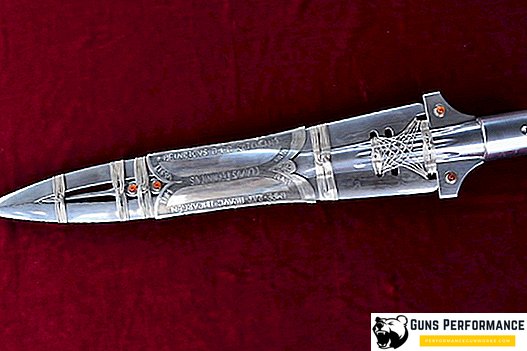
The spear can be called a real long-liver among the cold pole arms. Cavalrymen used the peaks until the middle of the last century. Currently, the spear is used only as a sports projectile, javelin throwing is an Olympic sport. A few reenactors and lovers of historical weapons are engaged in making copies. Anyone can find on the Internet materials on the topic "How to make a spear with your own hands." Even today, the creation of a spear is not particularly difficult.
Copy classification
In fact, the term "spear" is quite general. It means a large number of different types of hoist weapons, which sometimes differed significantly from each other. The appearance of the spear was determined primarily by the features of its application. In other words, the size and shape of the weapon depended on who used it in battle, the foot soldier, trooper, and against whom it was sent. In a separate group can be distinguished light spears, intended for throwing at the enemy.
It is believed that for the manufacture of the shaft of a long knight’s spear of the Middle Ages they took the most fragile tree. What was it for? The calculation was that the spear would break after the first strike. In combat, the rider could move at a speed of 10 meters per second, which provided him with a significant amount of kinetic energy. If two knights rushed towards each other, the energy of their collision increased multiply. At such a speed, a strike on the target could well lead to the fall of the rider and horse. Therefore, a fracture of a spear shaft looked more preferable than a fracture of a knight’s arm or neck. Later, the expression "breaking spears" has become synonymous with any fight.
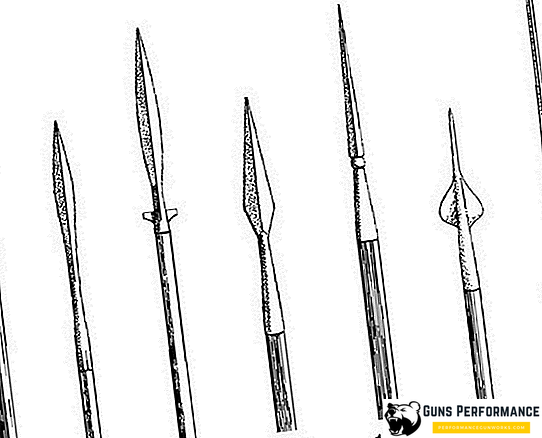
Any spear consists of a shaft (rattle) and a tip. The shaft was made of wood and could have different sizes. The tip of the spear was usually made of metal. Initially, it was simply tied to the outer side of the shaft, but later the method of attachment became much more complicated. The tip consisted of a blade, the Tulei - the tube into which the shaft was inserted, - the neck located between the tube and the blade. Sometimes the lower end of the shaft was iron bound. The tip was put on the shaft as a glove, for additional fixation small nails or rope (leather strips) were used. There was another way of attaching the tip to the pole: they could simply drive it into a tree, wedging it.
Spears differed greatly in their length. It ranged from 1.5 to 7 meters. Moreover, especially long spears were weapons of infantry and were used both against the enemy's pedestrian ranks and as a means of defense against enemy cavalry. It is clear that such types of copies could be used only in a closed order.
It must be admitted that we do not have complete information on the design of some antique and medieval copies. For example, there is no detailed description of the famous Greek spear sarissa, ancient authors differ greatly in the length of this weapon (from 3 to 7 meters). Archaeologists have found metal sleeves, which may have served to connect the components of the sarissa into one. However, in written sources there is no mention of the fact that this spear consisted of several parts. In addition, in this case, with such a length of a spear, the strength at the junction would be clearly insufficient.
Separately, it is necessary to allocate throwing spears. In principle, the borders of this group of weapons are somewhat blurred, since any more or less short spear can be thrown at the enemy. A specialized throwing weapon was a dart, the creation of a spear of this type occurred in the Stone Age. A dart is a short light spear with a length of 1.2-1.5 meters and a weight of about one kilogram. Some of them even weighed 200-300 grams. In Russia, darts were called sults. One of the main differences of darts from the usual "melee" copies was the shape of their tip. As a rule, they were made so that they were stuck in enemy shields or armor.
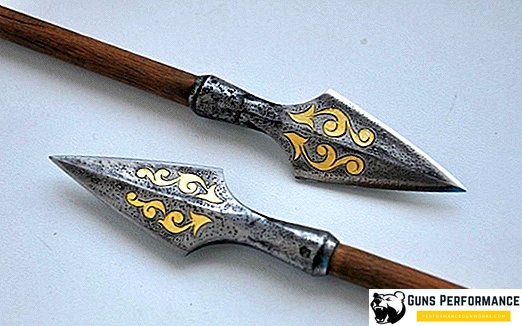
Even in the stone age, a special device was designed for the darts - spear thrower. It was a plate or belt loop with an emphasis for a spear. With its help, the thrower could throw his projectile a much greater distance. Spear throwers are almost obsolete after the appearance of the bow.
Darts were very common in the period of Antiquity and in the Middle Ages. Usually they were used by peoples who did not have good and powerful bows. Very good darts throwers were the ancient Greeks, Macedonians and Romans. Darts were much heavier than arrows, so they had a greater penetrating power compared to the bow. In Europe, this type of weapon gained popularity again from about the 13th century, when steel production increased significantly.
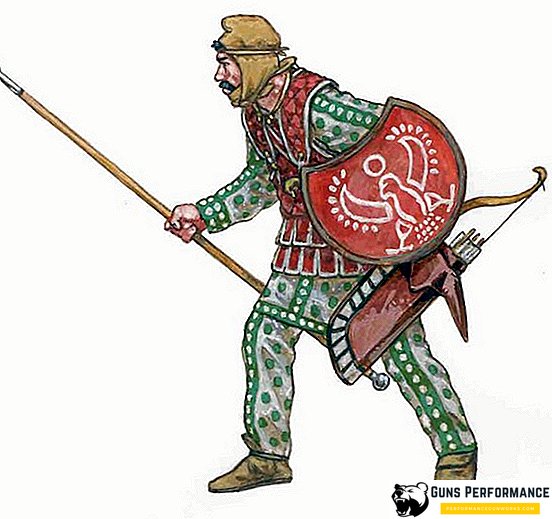
Another feature of copies, in addition to their size, was the shape of their tip. It could be stingy, leaf-like, diamond-shaped, dagger-shaped. The wide distribution of armor led to the appearance of narrow faceted tips, such a spear point could cope not only with chain mail or leather shell, but also penetrate lamellar armor.
Lance history
Take the long sharp stick in the upper limbs to poke it into their opponents, the monkey thought of it. This weapon can already be called a prototype spear. The creation of a spear with a stone tip is attributed to our ancestors of the Cromagnons. Initially, this weapon was probably used for hunting and protection from predatory animals. And it gave primitive hunters a huge advantage.
The oldest spears found by archaeologists are 300 thousand years old.
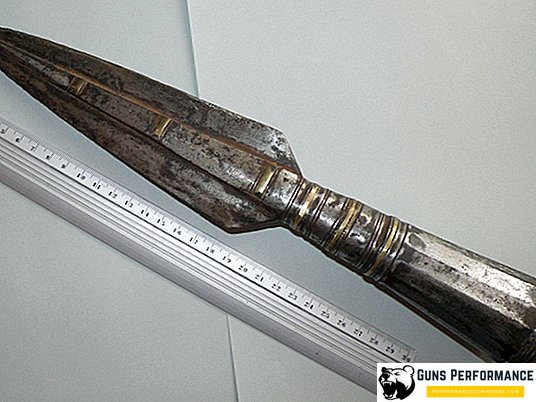
Even a short spear keeps the enemy at a distance of one and a half meters and allows the hunter to avoid the sharp fangs and claws of the beast. A person could, from a safe distance, poke a leopard or a bear into the carcass without fear of being seriously injured. And if necessary, this weapon could be thrown at the enemy. The question "how to make a spear" then did not exist: after all, stones and wood were always at hand.
After a person became acquainted with metals, the tips of the copies were made copper and then bronze. This allowed them to be much stronger and sharper. Initially, there were two types of copies: throwing and hand-to-hand, and, probably, the throwing type of this weapon prevailed.
After the emergence of the tactics of a closed down spear for hand-to-hand combat, it became the main weapon of the warriors. From the javelin, it was primarily distinguished by its balance.
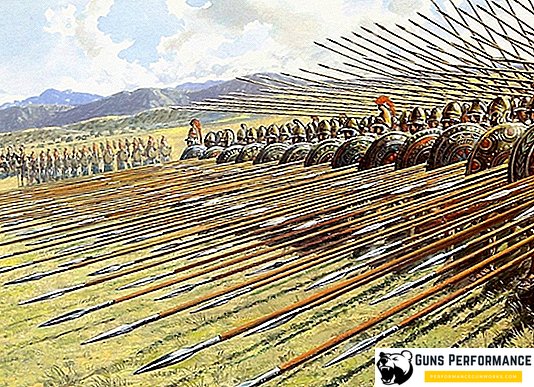
The most famous antique spearmen were the Macedonian warriors, and the most famous type of the long spear of antiquity, without a doubt, is the sarissa. This is an unusually large spear (up to 7 meters) with a counterweight and a small tip. Making copies of this type was put on stream in ancient Greece. This weapon was used by the famous Macedonian phalanx. It can be said that the creation of a spear of this type and the tactics of its use in a closed formation became the locking of the brilliant victories of Alexander the Great.
The Romans were not such fans of spears as the Greeks. Nevertheless, the spear was a regular weapon of legionnaires, however, this spear was throwing. The famous Roman pilum consisted of a shaft and a very long tip, which was often made of soft iron. In battle, the goal of the pilums was not only the bodies of enemies, but also their shields. This short spear weighed 1-1.7 kg, stuck in the enemy shield, it forced its weight to lower it. Well, the gladiuses came next.
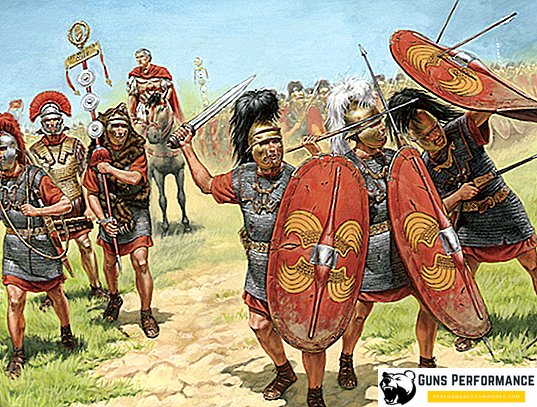
One should not think that only infantry used spears. Riders also liked the main constructive feature of this weapon - its length. Sarmatian and Scythian horsemen used throwing darts, spears as a strike weapon of the cavalry warrior began to be used after the appearance of heavy cavalry. For this purpose, the usual infantry spear was used, in which the center of gravity was somewhat changed due to the massive counterweight.
Until the stirrup appeared, the cavalry lance was held in the raised hand and the enemy was struck from top to bottom, thus minimizing the danger of the rider flying out of the saddle after the strike
The invention of stirrups gave new impetus to the spread of cavalry copies. The stirrups allowed the rider to firmly hold his horse and spear powerful, accented blows. The most famous cavalry spear of all times and peoples, without a doubt, is the lance or long knight's spear. It was the main weapon of medieval European heavy cavalry. Its length could reach 4.5 meters, and weight - 4 or more kilograms. The shaft of this weapon was more massive compared to large infantry spears.
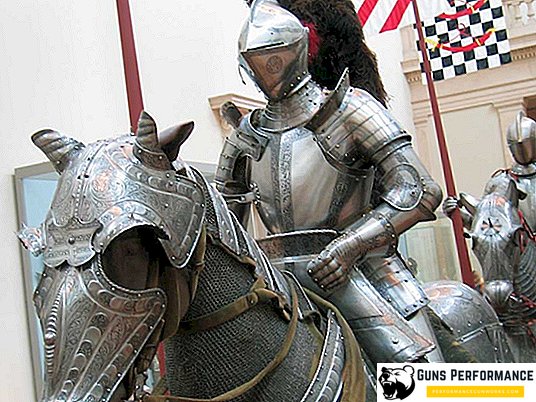
It should be noted that Lance did not appear immediately. At first, the European cavalry used ordinary spears, but later they were modernized and "sharpened" as much as possible under the conditions of equestrian combat. They became longer, a special shield protecting the arm appeared, and in about the 15th century cavalry spears began to abut the armor current, which reduced the load on the rider’s arm.
In the Middle Ages, cavalry used spears not only to destroy infantry, but also against enemy riders. A spear strike of two mounted knights clad in armor is a real "calling card" of the Middle Ages.
Another well-known type of cavalry weaponry is the so-called cavalry lance, which became widely used around the 17th century. It had a much more modest size compared to its infantry counterpart: up to 3 meters long and up to 2.5-3 kg in weight. Cavalry lance was used until the middle of the 20th century. In the First World War in the Russian army she armed the first ranks of the Cossack and Uhlan regiments.
The most famous infantry spear of the Middle Ages is the peak. This is a long spear, its dimensions could reach five to six meters, and the total weight - four to five kilograms. After the appearance of stirrups in Medieval Europe, heavy cavalry became the main strike force of any army. In full growth, the question arose of protecting the infantry order from it. The answer to the new threat was the appearance of infantry peaks: a close formation of pikemen was able to stop any attack of the enemy's cavalry. The peaks did not have a counterweight, therefore, to hold these weapons required remarkable physical strength.
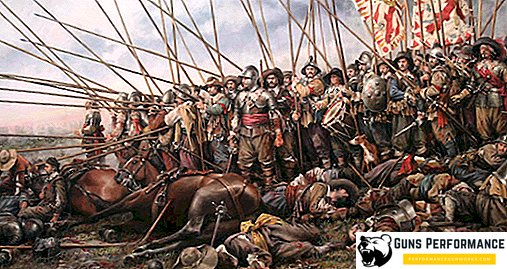
Pike did not strike, it was simply sent in the direction of the enemy and attacked. Later, pikemen served as protection for musketeers - fighters armed with the latest military technology of that time.
A heavy peak began to lose its combat significance only after the mobile artillery appeared on the battlefield, approximately in the 17th century. At first, her place was replaced by a light peak (length up to 3 meters), and then it was completely crowded out with a bayonet.
